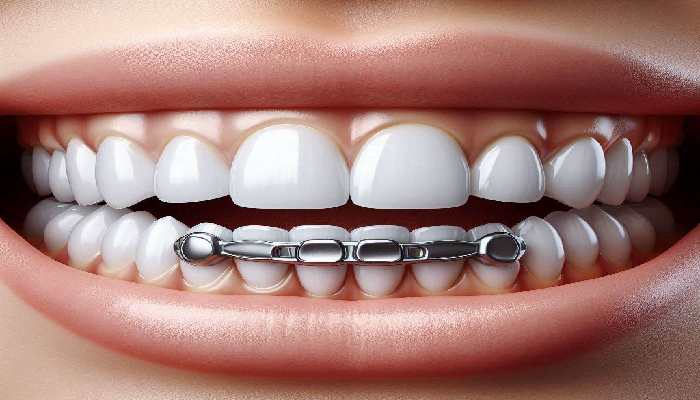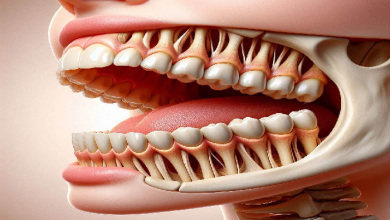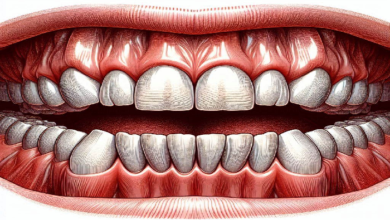How Long Does a Dental Bridge Last

How Long Does a Dental Bridge Last is an important type of tooth replacement. It can fill embarrassing gaps in your smile, prevent your remaining natural teeth from slipping into place, and improve your ability to chew.
However, before you decide to undergo a dental bridge in Branford, you may want to know how long this type of restorative treatment usually takes. In this article, we will discuss the average lifespan of a dental bridge and how to ensure that your bridge will stand the test of time.
What is a Dental Bridge?
How Long Does a Dental Bridge Last replace missing teeth. Specifically, it can replace missing teeth or dentition.
As the name implies, this device literally “fills in the gaps” in your smile. Your dentist can create a custom bridge that matches your natural tooth color.
There are various components that make up a dental bridge.
- An abutment is a structure that supports a dental bridge. The term often refers to natural teeth, but can also refer to the small connecting posts used in dental implant-supported bridges.
- A bridge is an artificial tooth (denture) that fills the space left after a tooth is lost.
Depending on the condition of the patient and the type of bridge received, the bridge can consist of one or more abutments and one or more bridges.
Think to Dental Bridges
Dentists use different types of bridges depending on your oral health goals. There are four main types of dental bridges:
- Traditional dental bridge. This is the most common type of dental bridge. It consists of a crown (caps) on both ends and a bridge (artificial teeth) in the middle. Dentists place crowns on natural teeth (abutments) on both sides of the gap and fill the space between them with artificial teeth (bridges). If there are healthy natural teeth on both sides of the gap, the dentist will use a traditional dental bridge.
- Cantilever dental bridge. A cantilever bridge resembles a traditional bridge. However, only one end has a crown, not both. So when the dentist attaches the bridge to your abutment teeth, the artificial tooth (bridge) “drops” or extends into the space. Dentists use cantilever bridges when there are only natural teeth on one side of the gap. Due to their design, cantilever bridges are not as strong as traditional bridges.
- Maryland Dental Bridge. Maryland bridges (or resin bonded bridges) use metal wings instead of crowns to secure the bridge. Dentists attach wings to the backs of adjacent teeth to keep the bridge in place. Dentists often use Maryland bridges to replace front teeth. These appliances are not strong enough to withstand the chewing force of the back teeth.
- Planting a supported bridge. Implant-supported bridges are similar to traditional bridges, but rely on dental implants instead of natural teeth. A dental implant is a small threaded post that replaces the root of a missing tooth. Before the dental implant bridge can be placed, the implant must be fully integrated (fused) with the jaw. This process takes an average of 3 to 6 months, but can take longer depending on the situation. If you have lost three or more teeth in a row, your dentist may use an implant-supported bridge.
How Long Does It Take to Heal After a Dental Bridge Procedure?
Recovery time varies from person to person and depends on several factors. On average, it takes 1 to 2 weeks for your teeth and gums to heal. However, it takes a little more time for your new dental bridge to feel natural and comfortable.
How Long Does a Dental Bridge Last?
On average, How Long Does a Dental Bridge Last 5 to 15 years. Some can last longer with proper care and maintenance.
You may have heard dentists refer to them as “permanent bridges”. Since they are permanent, only a dentist can remove them. But it doesn’t last forever. If signs of wear or damage are visible, it should be replaced.
How should I care for my dental bridge?
Caring for dental bridges is the same as caring for your natural teeth. To keep your bridge in good condition:
- Brush and floss daily.
- Use non-abrasive toothpaste that contains fluoride.
- Clean under the bridge every day with dental floss or a close brush (a small brush designed to fit between the teeth).
- Avoid hard or chewy food.
- Do not chew ice, pens, pencils, nails, etc.
- Visit your dentist regularly for cleans.
Types of Dental Bridges
Your dentist can help you decide which type of bridge is best for you based on your age, the condition of your surrounding teeth, and the size of the gap.
Traditional Dental Bridge
This type of bridge creates a crown or implant on both sides of the missing tooth and places a bridge in the middle. Traditional bridges are the most common type of bridge and are made of porcelain combined with metal or ceramic.
Cantilever dental bridge
This is used when there are only adjacent teeth on one side or when there are no teeth. This is very rare and is not recommended to be done in the back of the mouth. This can put excessive pressure on other teeth and cause damage.
Bonded dental bridges in Maryland
Also called resin bridge or Maryland bridge. They are made of porcelain, metal bonded porcelain, or plastic teeth and gums supported by a metal or porcelain frame. Metal or ceramic fins are often on one side of the bridge and are attached to existing teeth.
Removable dental bridge
Removable bridges are usually attached to the teeth on both sides with metal clasps. You can put it in and take it out yourself. This type is usually made of metal and acrylic.
Dental bridge to implant
This resembles a traditional bridge. However, instead of using natural teeth to support both sides of the cavity, dental implants support it.
Consider several factors with your dentist to determine which type is best for you. These include:
- What are your preferences?
- your age
- How many teeth are missing?
- Are there natural teeth on both sides and their condition?
- general dental health.
FAQ
How long do dental bridges last?
How Long Does a Dental Bridge Last 5 and 15 years before needing to be replaced. You can help him keep moving forward by taking care of him.
What are the disadvantages of dental bridges?
The main disadvantages of dental bridges are:
- There are problems with surrounding teeth and they can be damaged.
- Peripheral teeth can fracture when pressure is applied.
- If you do not follow a proper cleaning routine, you risk tooth decay and periodontal disease.
What is the best type of dental bridge you can get?
Your dentist can help you decide which type is best for you. This depends on several factors, including the size of the space, the health of the surrounding teeth, and the price.
Do dental bridges hurt?
Your dentist will numb your mouth during the potentially painful part of the procedure. Building bridges is not a bad thing.
Final thoughts
A How Long Does a Dental Bridge Last fills a gap caused by the loss of one or more teeth. Depending on the type you choose, this process requires at least two visits to the dentist and may take longer. Bridges allow you to chew normally, speak clearly, and avoid the problem of shifting teeth to fill gaps.
Related Post,
How Much Do Braces Cost?
How Much Does Teeth Whitening Cost
How much is a root canal



